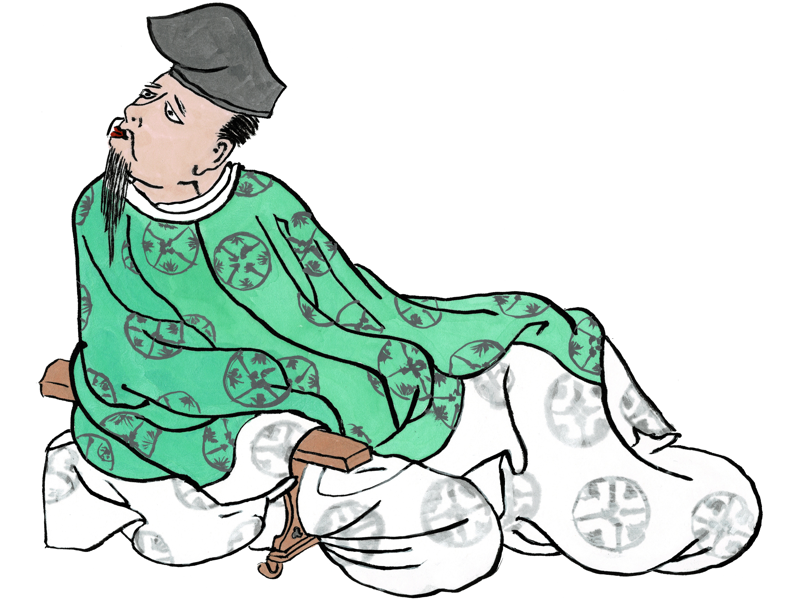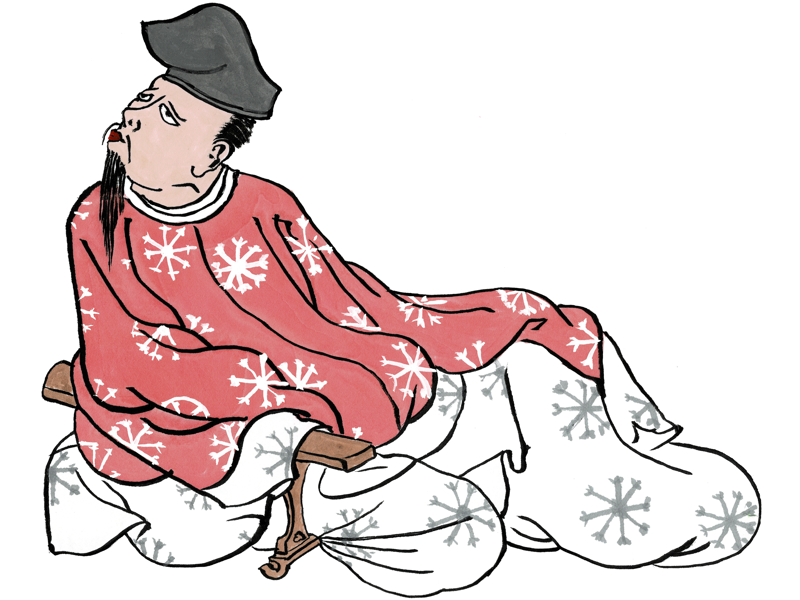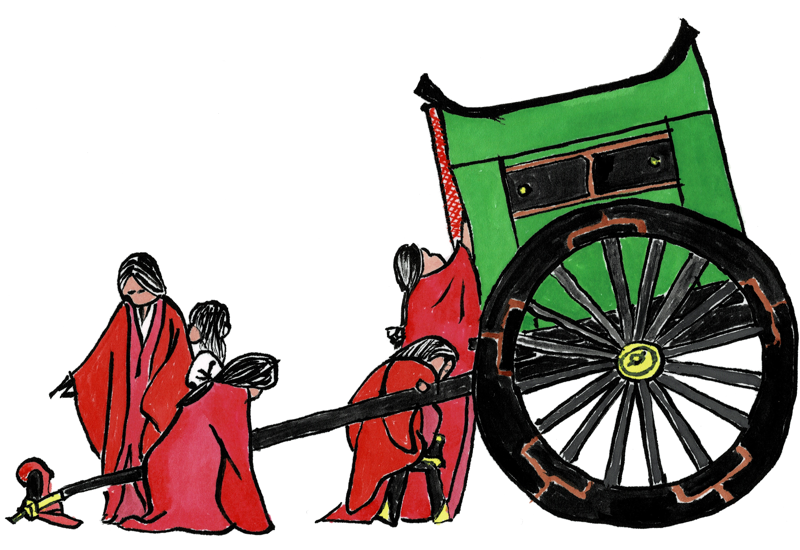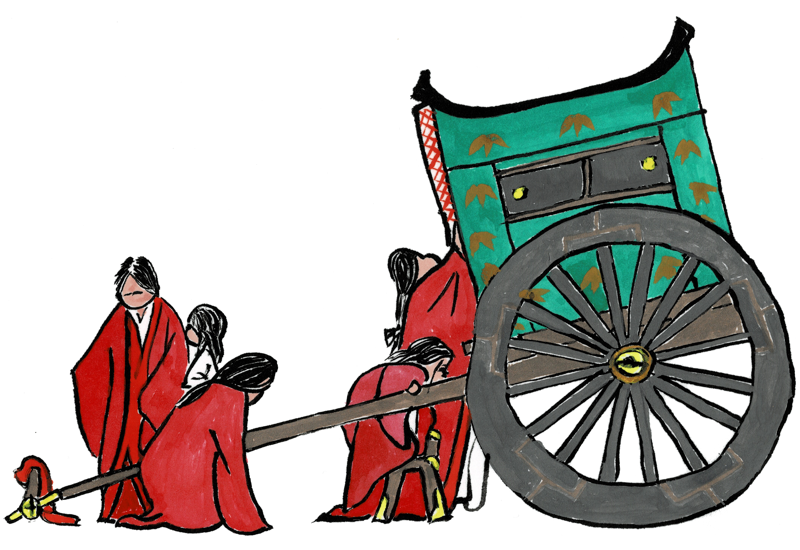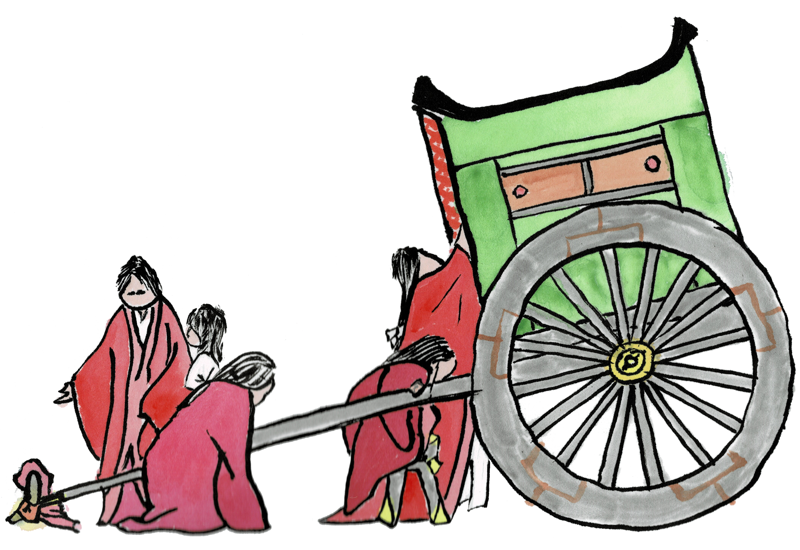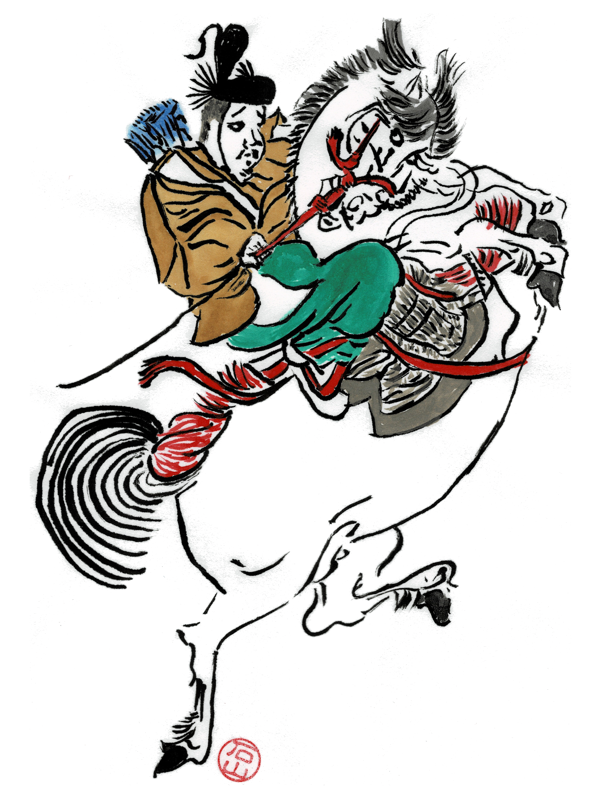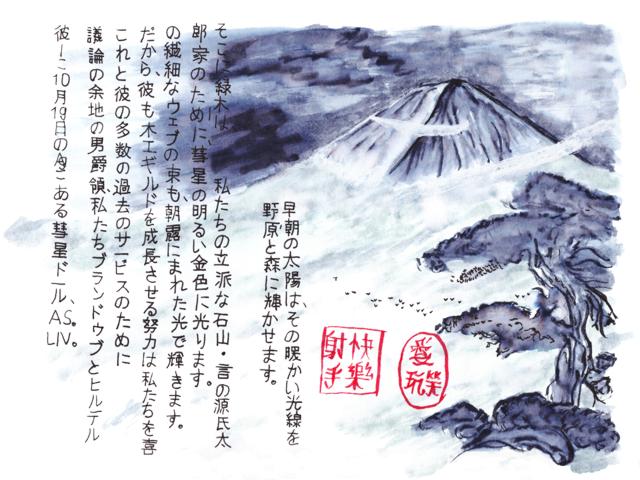I did a third portrait of Hitomaro while doing the ones described in Poetic Brushwork. I did this one on larger paper, with the intention of mounting it as a kakejiku hanging scroll. There was a lot of work involved in that, but I’m happy to say that this is now complete.
In addition to mounting the painting on more paper, the fabric all had to be backed with paper and attached around the outside of the painting. Then, the oak rod and half-rod had to be cut and added. Following that, I had to braid the suspensory cords and figure out how to mount them to the upper rod. I made the weighted ends for the lower rod and finished them with tinted shellac.
When I started doing research on kakejiku, the advice from most sites was to leave it to professionals. You can see pretty clearly that this advice was sound. I never really did get the painting flat, and there are a host of other minor problems with this. Now I have a portrait of Hitomaro that I am not afraid to take camping, though!



